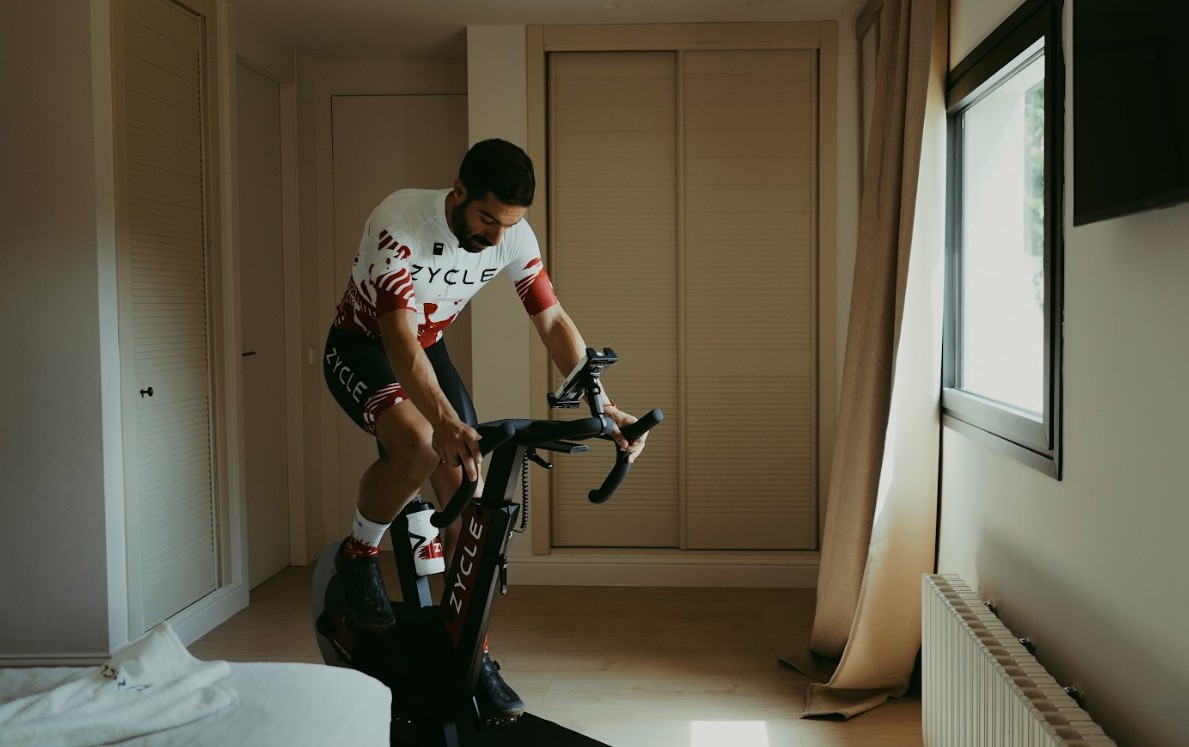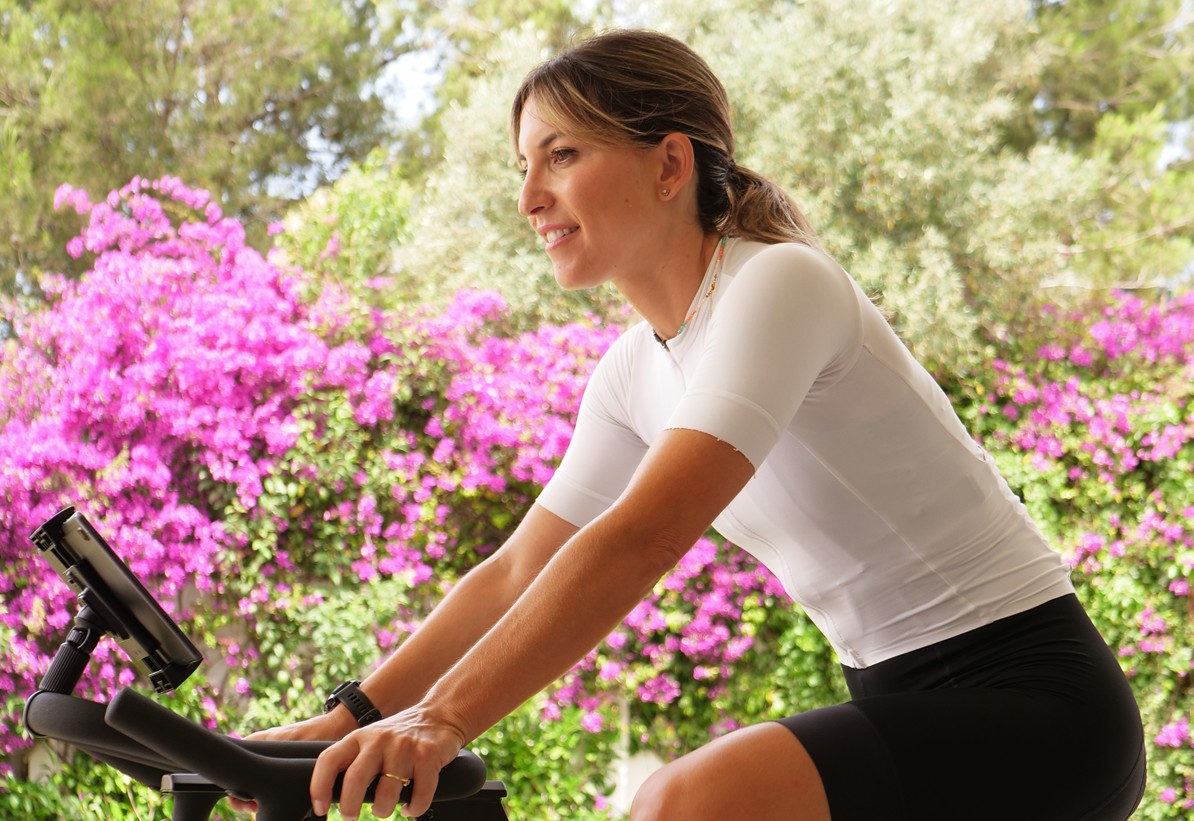Breathing is one of the most important and yet most overlooked aspects of cycling. Knowing how to breathe while cycling not only helps you maintain your energy for longer, but also improves concentration, muscle oxygenation, and overall performance. Mastering how to breathe better while cycling is not a matter of luck: it requires practice, knowledge, and a good connection between body and mind. Below, we explain everything you need to know about breathing while cycling. Keep reading!
How to breathe while cycling
During training or competition, the body needs an enormous amount of oxygen to fuel the muscles that are working tirelessly. Proper breathing technique when cycling allows you to get more out of each breath, delay fatigue, and maintain a steady pace even on the most demanding stretches. There are different ways to breathe when cycling, and not all of them are equally efficient. The key is to adapt your breathing to the intensity of the effort, the terrain, and the characteristics of each cyclist.
At rest or at low intensity, the body gets enough oxygen with calm, rhythmic breathing. But when the load increases—such as on a climb or sprint—the diaphragm and intercostal muscles must work harder. This is where technique becomes crucial to maintaining control and avoiding hyperventilation. In general terms, the best way to breathe when cycling is to do so deeply and in a controlled manner, prioritizing inhalation through the nose and exhalation through the mouth. This pattern helps to filter and moisten the air, improves gas exchange, and reduces muscle tension in the torso. We review the main techniques that can make a difference on the bike.
Should you breathe through your nose or mouth when cycling?
Breathing through your nose while pedaling has multiple benefits. In addition to warming the air before it reaches your lungs, your nose acts as a natural filter that removes impurities and helps maintain moisture in your airways. This type of breathing promotes constant oxygenation and a balanced heart rate, especially during low- and medium-intensity workouts. However, when oxygen demand increases, such as during intense efforts or when climbing a mountain pass, it may be necessary to combine nasal inhalation with mouth exhalation to avoid feeling short of breath. A useful tip for better breathing while cycling is to practice nasal breathing during the first few minutes of your warm-up. This allows your body to get used to a more natural and efficient airflow, preparing your lungs for more demanding phases.
Diaphragmatic breathing in cycling
Diaphragmatic breathing in cycling is an essential technique for those seeking to improve efficiency and maintain calm during exercise. It involves using the diaphragm—the muscle located just below the lungs—instead of the chest, allowing for deeper inhalation and greater oxygen exchange. When applying this technique, the abdomen expands during inhalation and contracts during exhalation, which facilitates the complete filling of the lungs and reduces tension in the shoulders and neck. This type of breathing has several advantages:
- It improves lung capacity and control of breathing rate.
- It increases muscle oxygenation and delays the onset of fatigue.
- Promotes a more stable and relaxed posture on the bike.
To practice it, it is advisable to do deep breathing exercises while lying down or sitting before getting on the bike, focusing on inflating the abdomen when inhaling and emptying it when exhaling. Over time, this technique becomes automatic while pedaling.
Adapting your breathing to the intensity of the effort
Knowing how to breathe while cycling also means recognizing when to adjust your breathing rate. During gentle efforts, controlled nasal breathing is sufficient. In contrast, during high-intensity stretches, breathing becomes shorter and more frequent, and it is necessary to coordinate it with pedaling. A technique widely used by professional cyclists is to synchronize breathing with pedaling: for example, inhaling for two or three pedal strokes and exhaling for the next few. This pattern helps maintain core stability and avoid tension in the diaphragm. The key is to maintain breathing awareness, even when the effort increases. Controlling your breathing means controlling your pace, and controlling your pace means maintaining power for longer.
How to improve your breathing when cycling

As we explained, knowing how to breathe on a bike is only the first step. To reach a higher level, it is important to train your breathing capacity, strengthen the muscles involved, and increase the volume of oxygen your body can process. One of the best-known indicators in this regard is VO2 max, which measures the maximum amount of oxygen the body can use during exercise. Improving this value allows you to sustain higher intensities for longer, which is why in this article we explain how to improve your VO2 max. Of course, there are simple exercises that help improve breathing while cycling in a practical way without having to leave home:
- Controlled apnea exercises: hold your breath for a few seconds before exhaling to increase your CO2 tolerance.
- Interval training (HIIT): alternating intense efforts with breaks improves the efficiency of the respiratory system.
- Conscious post-workout breathing: practicing deep, slow breaths helps you recover and better oxygenate your tissues.
Breathing training not only improves endurance, but also strengthens the connection between body and mind, allowing you to stay focused on each pedal stroke. Breathing well means pedaling better. In cycling, mastering your breathing is no minor detail: it is the basis for performing better, enjoying your training, and reaching new limits on the bike. Every inhalation is energy; every exhalation is control. The next time you get on your ZBike or ZYCLE rollers, remember that your breathing can be the best engine to propel you forward.


 Cart is empty
Cart is empty 


